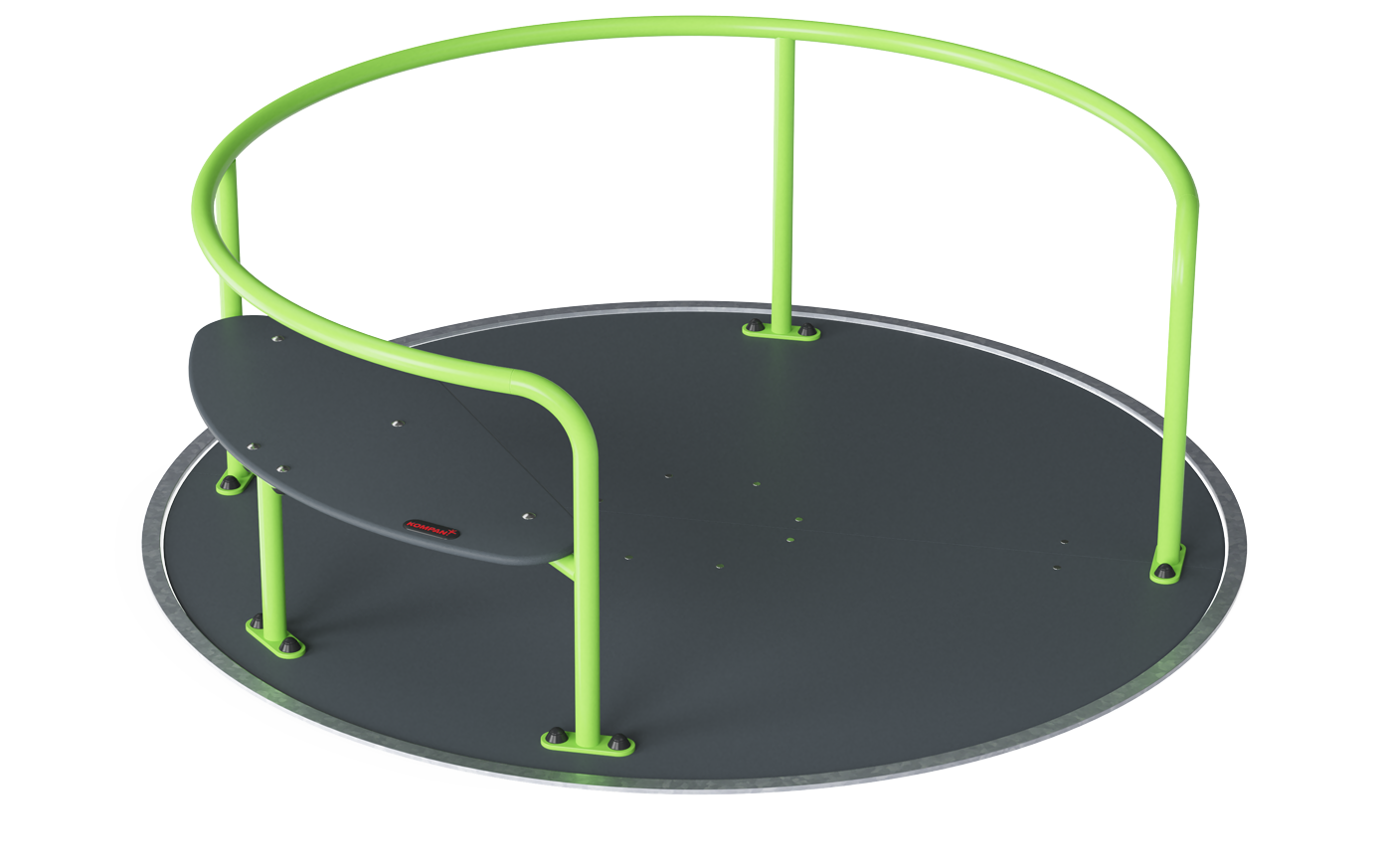
PCM157
Universal Carousel
2+ Years
29.1 m2
8 Users
When designing an inclusive playground it is important to be mindful of all the different needs and behaviours of the users. It is all about creating equity in access and use. By following our universal design principles you are well equipped to plan and design your inclusive play area.
Our sales and design team based in our Galway office have years of experience in the play industry and can help guide you in the right direction.

Above is an example of a large playground - regardless of the size of your inclusive playground it is important to consider the below -
Can users get around? Start by ensuring accessibility to the playground. Plan for easy access to parking and ensure your gate openings are wide enough for wheelchair users to enter the playground.
Choose inclusive playground surfacing, that is easy to manoeuvre for users with mobility difficulties. Wide pathways make it possible to get to equipment and to navigate the around the playground.
Include quiet areas with benches and shading for caregivers and children that get easily overstimulated to withdraw to.
Design for both social and solitary play areas. Inclusive parks should offer both thrilling, social play options, but also quiet play with sensory playground equipment.
Make sure that elevated-level and ground-level play activities are accessible and usable for users with mobility difficulties, either by a ramp structure or easy-access surfacing material. Ramp structures provide access to levels of play otherwise not reachable by, e.g., wheelchair users.
Often you can apply for to help realise your playground project.
To help the planning process, we have created an easy overview of the best practices for designing inclusive playgrounds - download your free copy below.

Sensory Play Events
Accessibility also means considering users with sensory or cognitive disabilities. Considering sensory play events in your inclusive playground design is a great way of activating equal play opportunities. Factors to consider are tangible and visual textures, areas with equipment for soothing body pressure, auditive movement motivators, and sensory experiences, e.g., scented plants.

Challenging Play Opportunities
Varied play equipment is the main success criterium when planning inclusive and universal playgrounds—having a choice of physically challenging, thrilling and sensory stimulating activities that can be played in groups or individually will ensure playability. Choosing , , and for the physical thrill will ensure success. For sensory stimulation, a choice of and tactile, sound and visual elements to play with, alone or together, will increase play retention.

Guiding Design Language
Create signal transitions in the playground and play area by using different textures and contrasting colours placed strategically in the . This will help users with vision impairments and a range of users with sensory disabilities navigate the playground.
Dramatic play elements such as will help many users connect and relate to the playground.

Individual Play and Breaks

Activities for Social Interaction
Social interaction is important for all of us. Therefore, an inclusive playground must also include play equipment and activities that stimulates social interactions; such as “two-of-each” parallel play options for training social skills. Placing swings, or spinning devices side by side is an amazing way to create a parallel play option.

Variety in Play Value
Variety in play opportunities is about creating a play space with wild and quiet activities. An inclusive playground should provide physical, social-emotional, cognitive-creative activities but also allow for breaks with seating and areas for retraction from play.
Creating equity in outdoor play opportunities is the primary obligation of communities because everyone benefits from playing together regardless of ability, nationality, gender or age.
Research shows that children with disabilities who play with typically developing children grow and develop their abilities and strengths, thus gaining a positive self-image.
Children with disabilities, just like all other kids, love the thrill and joy of playing with others.
Children’s physical, social-emotional, cognitive and creative development is not only supported by play, it is developed through play.
Why Choose KOMPAN? KOMPAN’s mission of creating truly inclusive, universal playgrounds has been part of our journey since the 1980s, and ADA playgrounds since the 1990s. We have more than 50 years of experience designing play solutions for all abilities. Over the past few years, the has intensified its observation studies and revisited the core insights of universal play.
Please fill in your contact details, and we will get back to you as soon as possible.